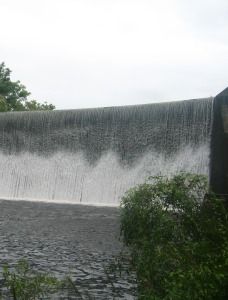An overflow relief gully (ORG) is a plumbing device located outside your house.
In the case of a sewer blockage, the drainage grate covering the top of your ORG pops out. This action releases sewage outside your home, keeping the interior of your house and its content safe from nasty surprises.
To protect your home, you need to ensure the ORG can function adequately in an emergency.
What does an ORG look like?
An ORG is a drain-like fitting made of plastic or metal alloy located outside your house; usually close to your bathroom or laundry external wall. ORGs can look different on various properties and should not be confused with stormwater drains.

How should my ORG be installed?
New properties
Plumbing standards regulate ORG installation. Your ORG must be placed:
- at least 100mm lower than the lowest waste outlet in your home (e.g. basin, shower or toilet)
- at least 150mm above the surrounding ground to prevent stormwater from flowing into it.
By ensuring your ORG connection is installed in accordance with the National Plumbing Code, you’ll comply with the Water Supply and Sewer Services Act and NT Building Regulations. You also decrease the risk of a sewer spill inside your new home or premises.
Old properties
Properties connected to sewerage systems after the mid-1970s should have an ORG.
Before this, properties connected to sewerage didn’t have an ORG unless additional work was carried out. We recommend you check your home or building to ensure an ORG is installed and, if not, contact a licensed plumber. Plumbers can fit non-conforming ORGs with a new type of attachment that provides effective vent and overflow relief while preventing stormwater from entering. Contact us to find out more, or speak to a Northern Territory licensed plumber.
How to look after your overflow relief gully
Property owners must maintain and repair sewer connections and fittings around their building up to the sewer connection point. It’s essential you keep your ORG in good condition so it can protect your building from spills and keep the sewer network free from blockages.
Make sure your ORG isn’t:
- covered by landscaping and garden beds or both
- hidden by an object, such as a pot plant
- unable to pop open because it’s corroded, filled with silt or concrete
- a grate that needs to be manually twisted to pop open
- installed at the wrong level
- allowing stormwater to enter from roof downpipes
- allowing pool backwash to enter.



